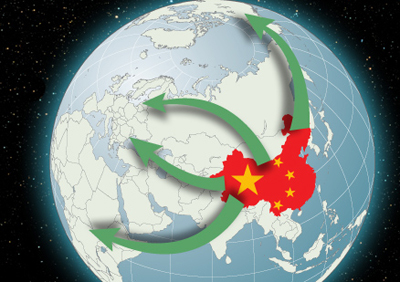Michael Economides
 While China has been praised by some Western politicians and pundits, including Al Gore for the country's miniscule non-hydrocarbon activities ("... we will trail China in the race to develop smart grids, fast trains, solar power, wind, geothermal and other renewable sources of energy"), it is China's global pursuit of oil and gas that has grown to a crescendo. The Chinese refer to their recent purchases as global acquisition and diversification. But amidst the maelstrom of global warming rhetoric, their aggressive moves are getting precious little attention.
While China has been praised by some Western politicians and pundits, including Al Gore for the country's miniscule non-hydrocarbon activities ("... we will trail China in the race to develop smart grids, fast trains, solar power, wind, geothermal and other renewable sources of energy"), it is China's global pursuit of oil and gas that has grown to a crescendo. The Chinese refer to their recent purchases as global acquisition and diversification. But amidst the maelstrom of global warming rhetoric, their aggressive moves are getting precious little attention.
China's latest purchase came last month when PetroChina paid $1.7 billion to buy a 60% stake in a Canadian oil sands operation from Athabasca Oil Sands Corp. The production from the oil sands investment is expected to be as high as 500,000 barrels per day under full development. The Canadian acquisition is among the latest in China's shopping spree for global oil and gas assets. And those purchases are further increasing the size of China's biggest oil companies - CNPC, Sinopec and CNOOC – which are now among the largest oil companies in the world. Last November, Petroleum Intelligence Weekly published its list of the world's 50 biggest petroleum companies. China's three biggest energy companies were ranked, respectively, as number 5, 25, and 48.
China has seized the opportunity of the global economic crisis and the decline in oil prices to solidify its energy security. And it sees access to foreign oil as a crucial element of its economic future. Last year, the country imported 50% of its oil for the first time.
Furthermore, in 2009, production by Chinese companies operating overseas oil and gas fields exceeded 800 million barrels (2.2 million barrels per day, about 57% of total imports). Meanwhile, China has become the biggest buyer in the global oil and gas M & A market. Chinese companies announced 11 acquisitions with a total value of $16 billion. The biggest deal was Sinopec's purchase of Swiss-based Addax Petroleum for $7.56 billion - by far the biggest acquisition in China's oil and gas trading history.
Some important highlights of Chinese overseas oil and gas purchases include:
- CNOOC and Sinopec's acquisition of three blocks in Angola
- China Investment Co.'s 11% stake of global depositary receipts of Kazakhstan's national oil company and 45% stake of the Russian Nobel Oil Group;
- Xinjiang Guanghui Group acquisition of 49% stake of Kazakhstan TBM Co. to jointly develop the eastern Kazakh oil and gas blocks in the Zaysanskaya region;
- China Development Bank's $10 billion contract with Brazil for "petroleum and loan exchange" which allows China to get 150,000 barrels per day for 10 years;
- PetroChina's acquisition of 45.5% percent of Singapore Petroleum Co., Ltd;
Through these deals, China has increased its potential oil supply by about 1.5 million barrels per day.
Since 1993, right about the time that China started importing oil, the big three petroleum companies have started a major push in foreign countries through equity-type investment and contractual management. The first salvo was on September 6, 1994 when CNOOC acquired 33% of Arco's share at the Malacca oil field in Indonesia. After the Chinese oil companies became publicly traded in 2000 and 2001 their acquisition of foreign oil and gas assets has become more vigorous. By September 2009, China's oversea oil and gas investments were spread among 28 countries and 73 projects.
To facilitate oil and gas imports, China is building pipelines. Under construction or already under partial operation are the China-Russia crude oil pipeline, China-Myanmar oil and gas pipelines, and Central Asia gas pipelines. It is clear that the building of the necessary infrastructure, coupled with China's aggressive global acquisition spree is part of a deliberate effort to increase the country's energy security.
Nessun commento:
Posta un commento